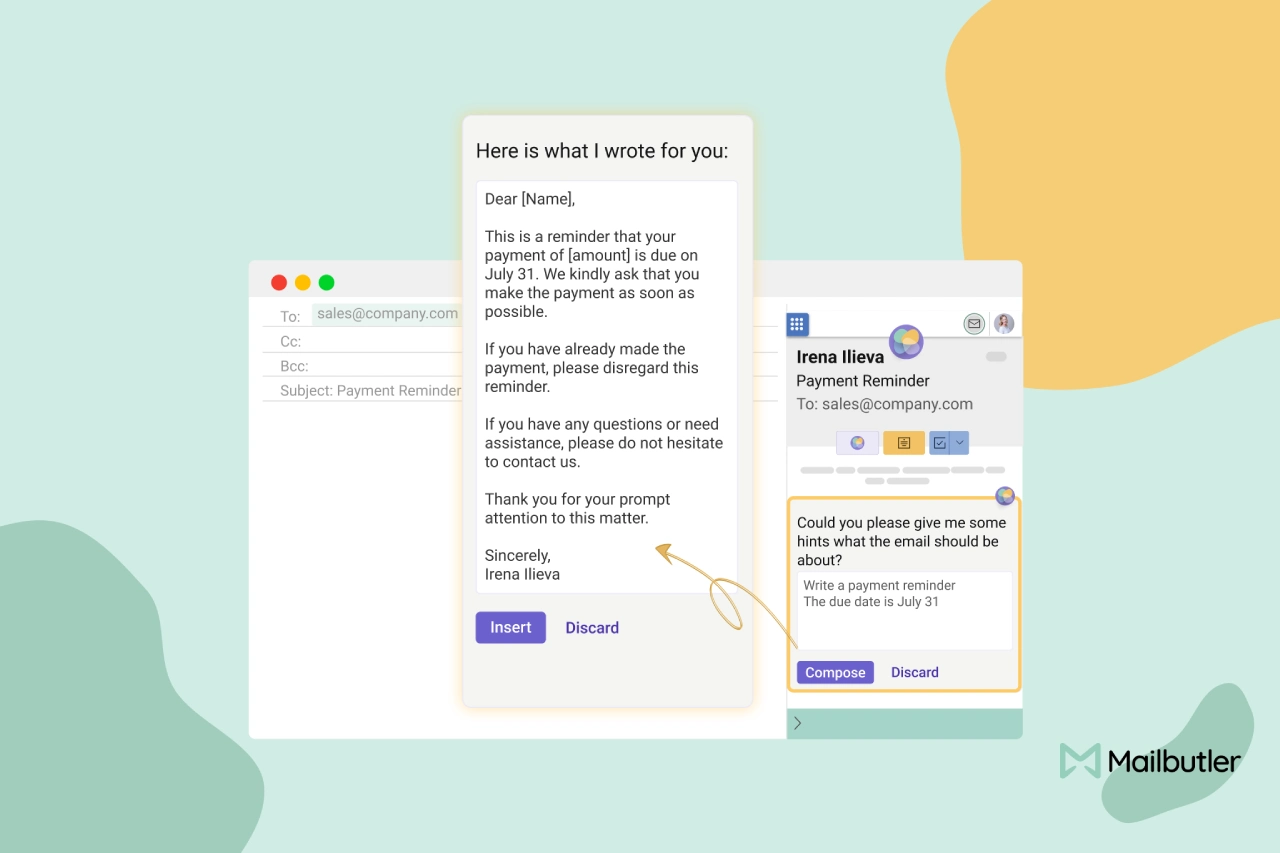Mailbutler news
Mailbutler Now Available in Microsoft AppSource
Mailbutler GmbH announces the availability of its flagship product, Mailbutler, in Microsoft AppSource, an online cloud marketplace.
Get the best practices on writing prompts for Mailbutler's Smart Assistant. Learn to communicate effectively with Maia.
Irena is an experienced Content and Email Marketer who loves animals, slow mornings, and all things Tolkien.
Maia, Mailbutler's AI-powered Smart Assistant, is a premium feature designed to improve your email management. Integrated into your Gmail, Outlook, and Apple Mail inbox, it simplifies composing, responding, and organizing your emails. This AI email assistant helps you compose and respond to emails, summarize messages, find tasks and contact information in your emails, and improve your spelling and grammar, all in seconds.

Tuning settings for Mailbutler's Smart Assistant
Maia, designed by Mailbutler developers with email communication in mind, uses OpenAI's technology to understand and process your email content. It offers six key features:
Note:
- Maia does not access ALL your emails
- You have full control over what is being sent to Maia
- Maia only accesses the emails you are actively using it for
- You can learn how to use Maia here

Mailbutler's Smart Compose example
When using Mailbutler's Smart Assistant, Maia, treat her like a personal email assistant. Instead of writing detailed prompts like you would write prompts for ChatGPT, give the content for the email directly.
Do: "wish Thomas a happy birthday"
Don't: "write email to Thomas and wish him a happy birthday"
Maia works best with clear and exact instructions. Vague prompts can lead to mistakes or added details that don't fit. If information is missing, Maia might guess or include unrelated details.
Do: "ask Tiffany for a meeting next Tuesday at 4 pm"
Don't: "schedule meeting"
Keep your instructions short and simple to save time.
Do: "present marketing goals 2023"
Don't: "could you please present the last year marketing goals 2023"
Give straightforward commands to ensure accurate action.
Do: "send invoice to John"
Don't: "please send an invoice to John about the recent services"
Be concise to enhance efficiency and clarity.
Do: "remind Sarah about the project deadline"
Don't: "send an email to Sarah to remind her about the project deadline"
Use direct language to prevent misunderstanding.
Do: "confirm appointment with Dr. Smith at 3 pm"
Don't: "can you confirm the appointment with Dr. Smith at 3 pm"
Simple phrases help Maia understand and act quickly.
Do: "thank Emily for her help"
Don't: "write an email to Emily to thank her for her help"
Specify actions clearly to avoid unnecessary guesswork.
Do: "ask Bob for the latest report"
Don't: "could you ask Bob to send the latest report"
Maintain a professional tone without excess words.
Do: "schedule team meeting for Friday at 10 am"
Don't: "can you set up a meeting with the team for Friday morning at 10 am"
Prioritize clarity over politeness to get faster results.
Do: "follow up with clients on contract status"
Don't: "could you follow up with our clients to see what the status of their contracts is"
Focus on key information to ensure prompt understanding.
Do: "send quarterly report to management"
Don't: "could you please send the quarterly report to the management team"
Specify actions clearly to avoid unnecessary guesswork.
Do: "ask Bob for the latest report"
Don't: "could you ask Bob to send the latest report"



